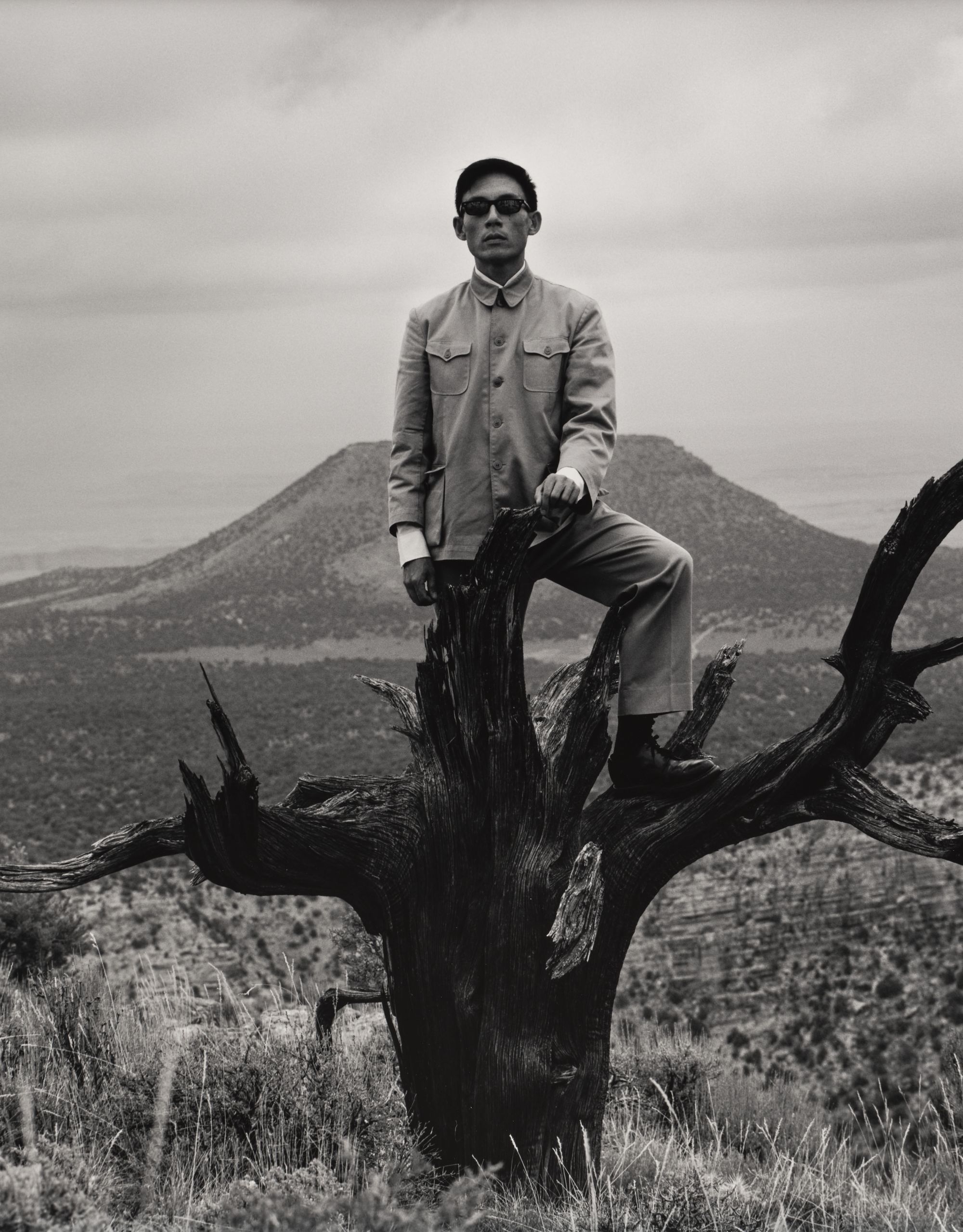
Tseng Kwong Chi: Visitor – Visiteur | Familial Tecnologies: Cayetano Ferrer, Gala Porras-Kim, Kang Seung Lee, Lotus L. Kang, rafa esparza, Rose Salane
3006 W 7th St #220 Los Angeles CA 90005
Saturday, March 16 at 3:00 PM – 5:00 PM
Ends Apr 27, 2024
Ends Apr 27, 2024
Opening reception: Saturday, March 16th from 3 to 5pm with a performance by Muna Tseng at 4pm
VISITOR - VISITEUR assembles nine photographic self-portraits by Tseng Kwong Chi (1950-1990). Tseng’s Expeditionary Series, which this selection highlights, features the artist in his ubiquitous “Mao” suit and sunglasses, situated within iconic North American landscapes. While the title of the series suggests a parody of the acquisitive colonial explorer, the range of affective nuance and the deliberation with which Tseng navigates these sites reveals a tender attention to the complex and contested intersections of bodies and histories—including Tseng’s own—that traverse these lands.
Tseng was born in British Hong Kong and immigrated with his family to Canada at the age of 16. He moved to New York in 1979, where he quickly joined the circle of artists in the East Village including Keith Haring, Kenny Scharf, and Jean-Michel Basquiat. Equipped with a camera and laminated ID card, he began adopting the persona of “Ambiguous Ambassador,” masquerading as the stereotypical “inscrutable Oriental.” Few called his bluff or saw through the act—thus proving Tseng’s implicit point about misinformed perceptions of a racialized Other. The Expeditionary works, however, contend not only with Tseng himself as a perceived alien visitor, but also consider how one navigates a land saturated with history, as thick with hauntings as it is with natural beauty.
In Provincetown, Massachusetts (1979) Tseng walks across sparsely-grassed sand. Without the title’s indication, he could just as easily be walking through snow. Only the gentle rise and fall of the beach’s dunes distinguishes land from sky. The shutter release cable (used less often in later works) trails from his hand like a leash. By the 1960’s and ‘70s, Provincetown had become a gay vacation destination. Tseng’s stately stride and military drag offset racist and homophobic stereotypes of Asian masculinity as effeminate and asexual, an undesirability that translated even into the queer milieu to which Tseng belonged. Here, the performance of Asian-Americanness and masculinity does double duty, indicating that queerness itself is perhaps in need of queering.
The scale of Tseng’s figure, and therefore its (in)visibility, oscillates from image to image. Campfire, Vermont (1983) sees the titular fire as only a flicker in the photograph’s bottom right corner, while Tseng’s sunglasses reflect the flames like a cartoon villain. Elsewhere, as in Banff National Park, Alberta (1986) and Grand Canyon, Arizona (1987), he recedes into the landscape. Banff sees him mimicking the pose of both intrepid explorer and Rodin’s The Thinker in mock or sincere contemplation. He sits on a bowed branch, almost lost amidst the vertiginous trees, so thickly-clustered that they render the sky practically invisible. The careful staging recalls the old adage of not seeing the forest for the trees: as apt a description as any of the identitarian dilemmas from which Tseng’s performances derived.
Muna Tseng, dancer and choreographer from New York, will perform a short excerpt from “SlutForArt,” a dance-theater work made in collaboration with Ping Chong, on the life, art, and times of her late brother, Kwong Chi.
_
Group show with the following participating artists: Cayetano Ferrer, Gala Porras-Kim, Kang Seung Lee, Lotus L. Kang, rafa esparza, Rose Salane
- 🤍AAPI-owned
